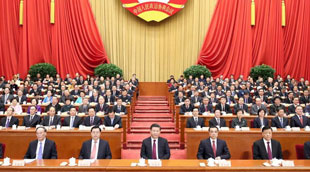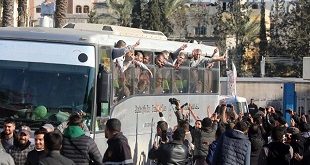
By Agencies
Dismissed as a manipulated attempt to rewrite history
Rwanda led a chorus of regional protests on Oct. 1 following the publication of a damning UN report on atrocities committed in the Democratic Republic of Congo (DRC) between 1993 and 2003.

The huge compendium, an inventory of crimes allegedly committed by forces from at least seven countries, has infuriated some of the main protagonists who charged that the report could destabilise the entire region.
‘The Government of Rwanda categorically rejects this report,’ Kigali said in its official response to the document, which said that crimes committed by the Rwandan army against Hutu refugees could be ‘crimes of genocide’.
‘The desire to validate the double genocide theory is consistently present throughout The Draft Mapping Report by ‘mirrorimaging’ the actors, ideology, and methods employed during the 1994 Rwandan genocide,’ it said.
The genocide-related accusations hit Kigali particularly hard as President Paul Kagame’s regime has largely based its legitimacy on being the force that stopped the 1994 genocide by Hutus against his Tutsi minority in Rwanda.
In its 30-page response, Rwanda lambasted the report’s lead investigator Luc Cote, accusing him of trying to compare the deaths of tens of thousands in the DRC over a decade with those of ‘a million in 100 days’ in Rwanda.
‘The Rwandan government’s reaction is very simple: this report is absurd,’ Rwanda’s Foreign Minister Louise Mushikiwabo told AFP.
‘It’s a report which was manipulated from the start by some individuals and organisations intending to blame the killings on all Rwandans. That is not possible, we cannot accept such a thing,’ she said. ‘Rwanda categorically states that the document is flawed and dangerous from start to finish.’
‘Our comments to the UN … center around seven specific areas of objection that clearly demonstrate how the Mapping Exercise has been a moral and intellectual failure as well as an insult to history,’ Mushikiwabo said.

She nevertheless expressed satisfaction over some of the minor modifications in the final report, notably ‘the fact that the historical context and the political context of the region at the time is taken into account’.
Rwanda’s reaction was nevertheless a step down from what it had threatened a month ago when the draft report was first leaked.
The draft version of the report said that some of the crimes perpetrated by Rwandan soldiers could count as possible acts of genocide.
At that point, Kigali said it would withdraw 3,500 peacekeepers from UN missions in Sudan if the report was published unchanged.
It stepped back from that move after a series of meeting with UN officials.
Other countries in the region are also accused in the draft report, but the most serious accusations focus on Rwanda.
Mushikiwabo accused the UN of ‘rewriting history’ and ‘improperly apportioning blame for the genocide that occured in Rwanda’.
The accusation of possible acts of genocide hits Kigali particularly hard as its government has drawn much of its legitimacy from being the force that ended the genocide in Rwanda.
The Rwandan government statement also renewed its accusations that the UN had done little or nothing to move ‘armed and ideologically charged refugees’ away from the Rwandan border.
It said the draft report failed to make clear that ‘genocidal forces, often posing as civilian refugees, were operating under the cover of UN refugee c

amps’.
Kigali said the UN draft report applied ‘the lowest imaginable evidentiary standard’ and accused it of over-reliance on the use of anonymous sources, he
arsay assertions and ‘unnamed, un-vetted and unidentified investigators and witnesses’.
The statement said ‘claims of genocide are directly contradicted by Rwanda’s extensive and coordinated efforts to repatriate, resettle and reintegrate 3.2 million Hutu refugees’.
‘Given these objections, it seems clear that no amount of tinkering can resuscitate the credibility of this fundamentally misguided process,’ Mushikiwabo said.
The following is a sample of allegations in the UN report:
19
- 8. Between 1 and 2 November 1996, Alliance of Democratic Forces for the Liberation of Congo (AFDL)/ Rwanda Patriotic Army (APR)/Burundi Armed Forces (FAB) units carried out the indiscriminate killing of around 250 civilians, including over 200 refugees and around thirty Zairians, in the village of Ndunda, near the Burundian border. On 24 November 1996, in the village of Mwaba, units of the AFDL/APR/FAB burned 24 Burundian Hutu refugees from the Biriba camp alive. On their arrival in Mwaba, the soldiers arrested those present in the village. After questioning them, they freed the Zairian civilians and imprisoned the Burundian refugees in a house which they then set on fire.
19

- 9. On 29 October 1996, units of the AFDL/APR/FAB killed around 220 male refugees near the church of the 8th CEPZA (Pentecostal Community of Zaire), now CEPAC (Community of Pentecostal Churches in Central Africa), in the village of Luberizi. The victims were part of a group of refugees who were told by soldiers that they had to be rounded up for their repatriation to Rwanda. The soldiers separated the men from the rest of the group and shot them or killed them with bayonets. The bodies of the victims were buried in mass graves near the church.
203. Around 22 November 1996, units of the AFDL/APR killed several hundred refugees in the Chimanga camp, seventy-one kilometres west of Bukavu. When they arrived at the camp, the soldiers asked the refugees to assemble for a meeting. The soldiers then promised them that they would slaughter a cow and give them meat so they could build their strength with a view to returning to better conditions in Rwanda. They then began to register the refugees, groupingthem according to their prefecture of origin. At a given moment, however, a whistle sounded and the soldiers positioned all around the camp opened fire on the refugees. According to the different sources, between 500 and 800 refugees were killed in this way.
2

- 280. On 12 April 1997, AFDL/APR units killed at least 33 people in the villages of Kanyati and Mudja. Upon their arrival at Kanyati, the soldiers asked the people to follow them to help them find Interahamwe. On the way, they ordered the civilians to lie on the ground and opened fire, killing 23 people. In the afternoon, they entered Mudja and opened fire on the people, killing ten civilians and injuring four. The soldiers had accused the people of Mudja of bartering supplies and coal with the Interahamwe operating near Goma.
281. On 6 January 1997, AFDL/APR units killed 184 people and torched the village of Kyavinyonge, in the Beni territory. The soldiers, who had come from Butembo, were pursuing Mayi-Mayi units from Kasindi. The ‘Kasindian’ Mayi-Mayi had made Kyavinyonge one of their strongholds. Two weeks before the massacre, violent clashes took place forty kilometres from Kyavinyonge in the village of Kyondo, forcing AFDL/APR troops to withdraw to Butembo. Having driven the Mayi-Mayi out of Kyavinyonge, the soldiers asked some of the civilians to come out of their houses and shot them dead. They also threw grenades at dwellings, resulting in many casualties. Among the 184 bodies recovered was that of a pastor, killed while he was trying to persuade soldiers to spare the civilians who were sheltering in his church. The victims’ bodies were buried in various mass graves located in the village.
451. In May 2002, elements of the Congolese National Army (ANC)/APR allegedly killed over 50 people in the village of Kitangi, 15 kilometres from Kampene, in the Pangi region. The killing took place after the Mayi-Mayi had been chased from the village by the ANC/APR. Rather than returning directly to Kitangi, the ANC/APR soldiers disguised themselves as Mayi-Mayi combatants. Having observed the enthusiasm with which they were greeted arriving disguised in this way, they arrested a large number of civilians, including some of the villagers as well as simple passers-by, who were rounded up along the roads. Most of the victims were killed by being struck on the back of the neck. In 2003, the villagers found the skulls of over 50 people, only 17 of which were identifiable. What kind of tyrant is this that allows a foreign journalist to host a show in his country and ask him all sorts of tough questions and he sits there patiently answering them? What media predator is this that allows his most formidable critics to appear on a live radio show in the country.
 The Independent Uganda: You get the Truth we Pay the Price
The Independent Uganda: You get the Truth we Pay the Price


